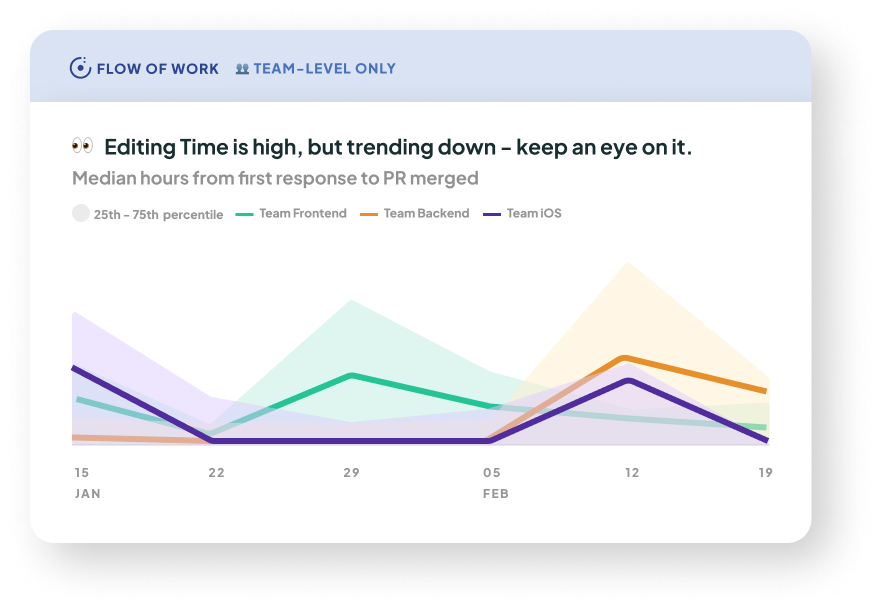Editing Time
Note: this metric is only shown at a team level, not an individual level.

What it is: This metric shows how long code takes to get merged once feedback has been received.
Why it matters: As a measure of back-and-forth between the code author and those who are reviewing the code, Editing Time is important for understanding bottle-necks in Change Lead Time. A high Editing Time could mean that the team needs to improve how they scope work, the received feedback is confusing, the PRs being created are large, or there are other distractions preventing fast iteration. A low Editing Time indicates that the team is able to quickly action feedback and ship work once it has been reviewed.
How we calculate it: We measure the number of hours from first feedback on the PR to PR merge, i.e. the back-and-forth editing time. If there was no response before the merge, Editing Time is null. See here for some additional calculation notes that apply from Change Lead Time.
What good looks like
We recommend that Editing Time be under 16 hours. This threshold is based on an internal analysis conducted by Multitudes across 80,000 PRs from a diverse range of customers and comparing against the SPACE and DORA research.
Last updated
Was this helpful?

